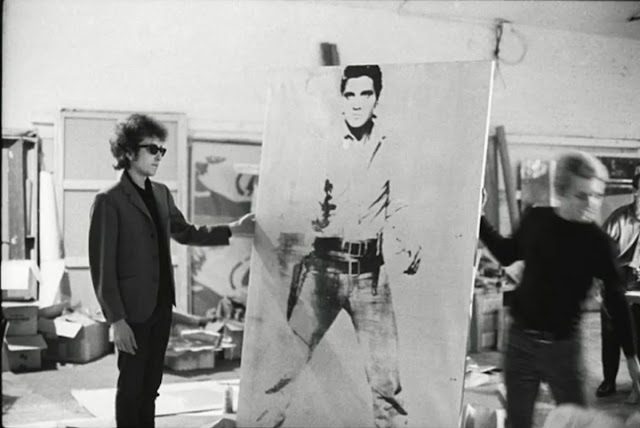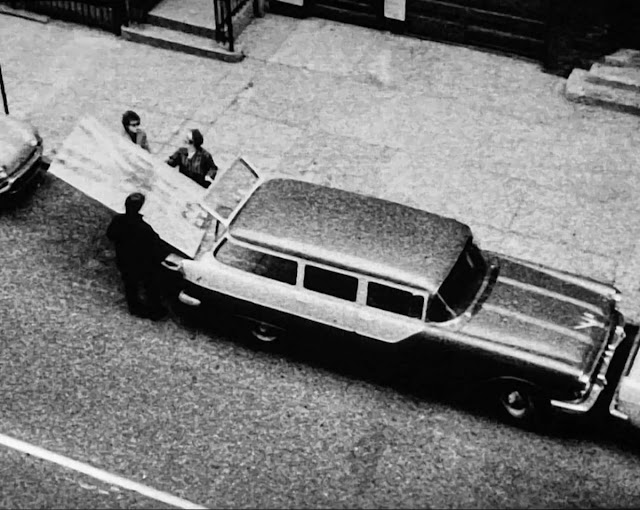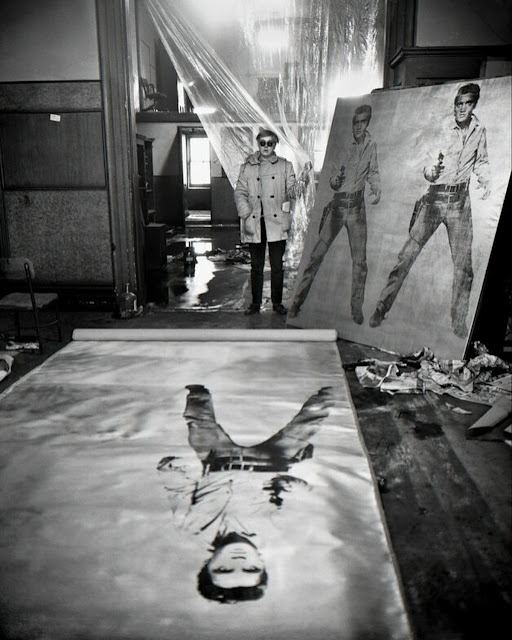Andy Warhol’s
Double Elvis silkscreen is a significant piece of Pop Art, known not only for its artistic merit and commentary on celebrity culture but also for its fascinating connection to musician Bob Dylan.
Warhol created a series of Elvis paintings in 1963 for an exhibition at the Ferus Gallery in Los Angeles. These works, including Double Elvis, were based on a publicity still of Elvis Presley from his 1960 film Flaming Star, where he is depicted as a gunslinger. Warhol used the silkscreen process, often applying the images onto silver backgrounds, which evoked the “silver screen” of Hollywood and added a sense of glamour. The Double Elvis specifically features two overlapping images of Elvis, creating a flickering or strobe effect, as if he's in motion or a filmstrip.
In 1965, Bob Dylan visited Andy Warhol’s famous studio, the Factory, in New York City. The exact circumstances of the exchange are a bit shrouded in legend, with various accounts differing on whether Warhol gifted the Double Elvis to Dylan or if Dylan simply took it as “payment” for participating in one of Warhol’s silent “screen tests.” Regardless of how he acquired it, Dylan left the Factory with the large Double Elvis painting strapped to the roof of his station wagon.
 |
| Andy Warhol and Bob Dylan in front of the Double Elvis which would later end up on the roof of Dylan’s station wagon. |
 |
| Bob Dylan with Andy Warhol at the Factory, 1965. |
 |
| Bob Dylan at the Factory – 1965 |
 |
| Barbara Rubin and Bob Dylan with another Silver Elvis. |
 |
| “It doesn’t fit!” Bob Dylan, Barbara Rubin, and Victor Maymudes trying to stuff the Double Elvis into the back of their station wagon. |
 |
| The piece was unable to fit it in the back of his station wagon, so Dylan secured it on top of the car. |
 |
| Unable to fit it in the trunk, Dylan placed the artwork on the car roof, holding one side while his passenger held the other as they drove off. |
Rumors circulated back to Warhol that Dylan had no particular fondness for the artwork. Stories, some perhaps apocryphal, claimed Dylan used it as a dartboard, hung it upside down, or even had a hose rigged to it.
“I liked Dylan, the way he created a brilliant new style,” said Andy Warhol. “I even gave him one of my silver Elvis paintings in the days when he was first around. Later on, though, I got paranoid when I heard rumors that he had used the Elvis as a dart board up in the country. When I’d ask, ‘Why did he do that?’ I’d invariably get hearsay answers like ‘I hear he feels you destroyed Edie [Sedgwick],’ or ‘Listen to Like a Rolling Stone — I think you’re the ‘diplomat on the chrome horse, man.’ I didn’t know exactly what they meant by that — I never listened much to the words of songs — but I got the tenor of what people were saying — that Dylan didn’t like me, that he blamed me for Edie’s drugs.”
In reality, Dylan hadn’t damaged the painting, but he had gotten rid of it. All accounts, including from Dylan himself, have him trading the
Double Elvis to his manager Albert Grossman for a sofa, a decision he’d come to regret. Grossman’s widow, Sally, later sold the painting at auction for a reported $750,000, and it last changed hands in 2012 for $37M.
“I once traded an Andy Warhol’s Elvis Presley painting for a sofa, which was a stupid thing to do,” said Bob Dylan. “I always wanted to tell Andy what a stupid thing I done, and if he had another painting he would give me, I’d never do it again.”
 |
| Andy Warhol in his studio with one of his Double Elvis silkscreen portraits of Elvis Presley, New York, 1964. |
 |
| Andy Warhol in his studio with a Double Elvis canvas and a few Suicide Jumper canvases just lying on the floor. |
 |
| Warhol, Andy (1928-1987): Double Elvis, 1963. |
 |
| The Ferus Gallery, Los Angeles, September 30–0ctober 26, 1963. |

















.jpg)

0 comments:
Post a Comment